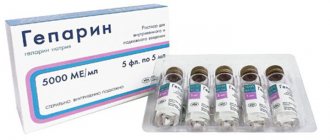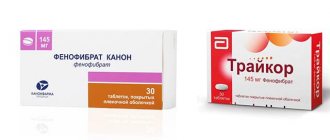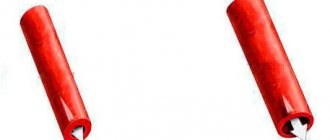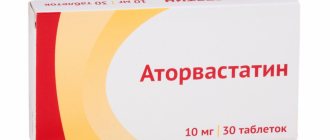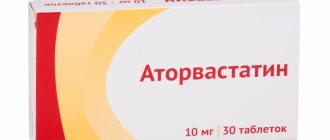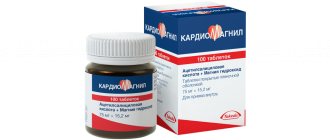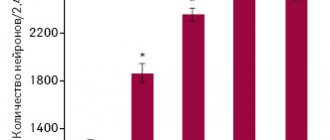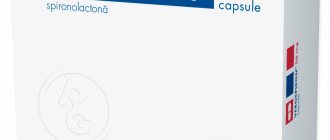Arterial hypertension, cardiac pathologies and some other diseases, one way or another, are associated with the finest biochemical processes occurring in the body.
Restoring normal metabolic phenomena plays a key role in the treatment of such diseases.
Not always one mechanism is involved in pathogenesis, therefore it is impossible to guarantee one hundred percent elimination of adverse events when influenced by an isolated factor.
Calcium channel blockers (CCBs) are a group of main drugs for correcting vascular tone and smooth muscles; they are used in the treatment of arterial hypertension, cardiac pathologies and other conditions, including those of non-cardiac origin. The group is not alone.
Calcium antagonists (another name for this group) are extremely serious drugs that, if used incorrectly, provoke fatal arrhythmia, decreased cardiac conductivity and cardiac arrest.
This is an extreme case, but in practice, especially with overdose and with independent uncontrolled use, such situations have been noted more than once.
At the same time, we are talking about the high effectiveness of therapy with this pharmaceutical group.
According to statistics, 87% of patients succeed in achieving stable correction of blood pressure levels, and arrhythmias disappear in 89% of people.
Therefore, the main rule that must be followed is no self-medication. Dosages, specific names, regimen of use - all this is prescribed by a cardiologist after a thorough diagnosis.
Mechanism of action
The basis of the mechanism of action of CCBs is the ability of blockers to reduce the permeability of the cell membrane to calcium ions.
These charged particles of the substance are directly involved in regulating vascular tone and smooth muscles of the organs.
The purpose of the drugs is not to block all calcium channels, but only the slow ones, which indirectly determine the level of blood pressure. Therefore, most of the funds in this group can be called selective, selective.
Calcium ions in smaller quantities penetrate through the walls of blood vessels and the heart, as well as organs. Hence the group of results:
- Heart rate drops. This effect must be taken into account when prescribing drugs, because for patients with bradycardia, Morgagni-Adams-Stokes syndrome, His bundle block or other disorders of the cardiac conduction system, taking it can cause enormous harm, even death.
- Decreased myocardial contractility. This effect reduces the need for oxygen in the muscle organ.
- Reducing vascular tone and relieving vasospasm. Due to this, blood pressure levels drop and blood flow normalizes. A calcium channel blocker not only performs the main task of correcting blood pressure, but also reduces the risks of heart attack and stroke, and is indirectly involved in the prevention of emergency conditions.
- The intensity of aggregation (sticking together) of formed blood cells decreases. This has a beneficial effect on the rheological properties (fluidity) of liquid tissue and significantly reduces the likelihood of blood clots.
- Indirectly, drugs from the group of calcium channel blockers minimize the risk of the formation of atherosclerotic plaques.
An additional pharmacological effect is a decrease in uterine contractility due to the effect on the myometrium (the middle layer of the organ).
Therefore, it is possible to use medications within the framework of obstetric practice to prevent premature birth, when there is a threat of its onset.
Types of slow calcium channel blockers
Since the BCC group combines dissimilar drugs, several classification options have been proposed. There are three generations of medicines:
- first - Isoptin, Corinfar, Diltiazem;
- second - Gallopamil, Norvasc, Lacipil, Foridon, Clentiazem;
- third - Lerkamen, Zanidip, Naftopidil.
Based on their effect on the main clinical symptoms, the following subgroups are distinguished:
- dilating peripheral arterioles - Nifedipine, Felodipine;
- improving coronary blood flow - Amlodipine, Felodipine;
- reducing myocardial contractility - Verapamil;
- inhibiting conductivity and automatism - Verapamil.
Depending on the chemical structure, BPC is divided into:
- Nifedipine group – Corinfar, Norvasc, Lacipil, Loxen, Nimotop, Foridon. Mainly dilate peripheral arteries.
- Verapamil group – Isoptin, Veranorm, Procorum. They act on the myocardium, inhibit the conduction of cardiac impulses through the atria, and do not affect blood vessels.
- Diltiazem group – Cardil, Clentiazem. They act equally on the heart and blood vessels.
- Cinnarizine group – Stugeron, Nomigrain. They dilate mainly cerebral vessels.
Classification by generation
It would be a mistake to think that some remedies are better and others are worse simply based on the generation of the drug.
In fact, the scope of application, the frequency of side effects, and effectiveness differ, which is most likely due to incorrect prescription without an objective and complete assessment of the condition of the patient’s body and his case.
In total, there are 4 generations of BCC:
- 1. Verapamil, Diltiazem. Also Nifedipine. Relatively old drugs are used to treat complex forms of arterial hypertension and cardiac pathologies.
- 2. Nimodipine, Felodipine. They are not fundamentally different from the first, but they are less likely to provoke side effects, and in some patients they give better results of therapy, which is due to the individual characteristics of the body.
- 3. Lercanidipine, Amlodipine. They are considered perhaps the safest in cardiology practice.
- 4. Cilnidipine (Atelek, Duocard and other trade names). This is the most modern remedy, but whether it is considered the most effective is a big question. The drug is definitely highly safe and can block several types of calcium channels, but precise comparative data are not yet sufficient for a final conclusion.
The list of calcium channel blockers of the latest generation is represented by Amoldipine and Lercanidipine; Cilnidipine is not yet used so often.
There is no point in understanding specific names of medications and trying to choose the best one. All means, regardless of generation, solve their own problem. Therefore, there are neither worse nor better options as such.
Rating categories should generally be used with great caution and only within the framework of a specific situation or task.
Attention:
The doctor selects the medication. You can achieve an effect on your own, but only a negative one. It is strictly not recommended to take risks.
Methods of application
Only a doctor can determine the appropriate drug and its dosage, taking into account the characteristics of the patient’s health condition, previous diseases, etc.
The following are the most popular drug regimens for the treatment of hypertension:
| Name of the drug | Dosage | Reception frequency |
| Nifedipine | 5-10 mg | 4 times a day |
| Amplodipine | 2.5 mg (possible gradual increase to 10 mg) | 1 per day |
| Isradipin | (Felopidine - 2 times a day) | |
| Felopidine | ||
| Verapamil* | 40-120 mg** | 1 per day |
| Gallopamil | 50 mg | 4 times a day (max. dose) |
Rarely used in the treatment of arterial hypertension. Often prescribed for the treatment of supraventricular cardiac arrhythmias.
The dosage is increased gradually until a stable therapeutic effect is obtained.
For the treatment of other diseases, calcium antagonist drugs are prescribed solely taking into account the individual characteristics of each patient.
Typing by active substance
Depending on the active component, the result will be expressed to one degree or another, and the duration of the beneficial effect will also be different.
Based on this criterion, we can talk about a certain degree of selectivity and direction of action of the drug.
Highlight:
- Phenylalkylamines. Affect cardiac structures. They are used in medical practice relatively often, are well tolerated and have a wide potential for use.
- Dihydropyridines. They have a predominant effect on vascular structures. Therefore they have a different scope of use.
- Benzodiazepines. The most effective medications are considered universal. At the same time, some names are inferior to the means of the other two groups in terms of effectiveness.
Phenylkylamines
They selectively (selectively) affect the myocardium, the conductive fibers of cardiac structures, and therefore are relatively rarely used for the treatment of arterial hypertension as such, except perhaps in combination with other medications.
The mechanism of action is based on the ability to block the conduction of an excessively strong impulse from the sinus node (natural pacemaker), and also stabilize the contraction frequency.
Based on the method of exposure, it is necessary to evaluate the advisability of taking phenylalkylamines, because in the presence of conduction disorders or a decrease in the pumping function of the heart, the use of products based on these substances is deadly, and therefore is strictly prohibited.
The main name of the calcium antagonist based on this group of chemical compounds is Verapamil.
The medicine has many structural analogues with other trade names, but this does not matter.
Verapamil is prescribed by a cardiologist for the treatment of cardiac diseases; it affects the atrioventricular node, and therefore can cause undesirable dangerous phenomena in the presence of impaired myocardial contractility.
If used incorrectly, it provokes heart failure and a critical drop in blood pressure.
Attention:
Concomitant use of Verapamil and other calcium channel blockers is not possible. Because the effect will be excessive, it is a big risk for life.
Dihydropyridines
Classic CCB drugs for the treatment of arterial hypertension. Despite the fact that the first drug of this subgroup was synthesized quite a long time ago, the relevance of medications has not decreased to this day.
With high efficiency, acceptable tolerability is maintained, and there is a low probability of side effects.
Calcium antagonists of the dihydropyridine series affect vascular tone almost directly, do not affect the myocardium and the conduction system of the heart, which creates a certain space for “maneuver”, allowing the use of the drugs more often and in a larger number of patients.
There are also modern medications in this category that are considered more effective and safe.
List of dihydropyridine calcium antagonists that can be found on pharmacy shelves:
- Nimodipine. A name with an extremely narrow scope of application. It is prescribed to relieve spasm of the cerebral arteries against the background of hemorrhage into the membranes.
The goal is to prevent deadly complications in this emergency condition.
Paradoxically, doctors and the manufacturers themselves do not recommend prescribing Nimodipine for the treatment of cerebrovascular insufficiency, and you should not use the medication during and after a stroke, because clinical trials in this direction have not been conducted, there is no information about the effectiveness and safety.
- Nifedipine. Perhaps the oldest drug of the presented subgroup. Used for the treatment of arterial hypertension, primary or symptomatic, caused by other diseases.
At the same time, it acts too harshly, provokes a decrease in myocardial contractility (rather an exception to the rule among dihydropyridines), and therefore cannot be used in patients with heart failure.
It is advisable to use Nifedipine as part of first aid for hypertensive crisis and some other conditions of this kind.
- Lercanidipine. Taken as part of the treatment of arterial hypertension, it is considered a new generation drug. Therefore, it provokes side effects less frequently, has a milder effect, and rarely causes exacerbation and worsening of heart failure.
- Isradipin. Identical in pharmaceutical properties to Lercanidipine. There are no conceptual differences in these two names.
- Nicardipine. It affects the blood vessels of the brain, coronary arteries, and is therefore used to prevent angina pectoris, heart attack and stroke. It is practically not used in the fight against emergency conditions for a number of reasons. Effective in eliminating chronic arterial hypertension.
- Amlodipine. It is considered the most preferred drug for the treatment of cardiac patients.
The drug effectively, but gently reduces blood pressure, does not affect myocardial contractility at all, which makes Amlodipine safer compared to analogues in the subgroup.
The medication should be used in parallel with other calcium channel blockers. As part of the substitution, if the drug is not suitable (which happens quite rarely), it is possible to use Felodipine, which is similar in properties to Amlodipine.
The question of prescribing a specific name remains open and is decided at the discretion of the doctor.
Benzodiazepines
Universal slow calcium channel blockers. It is used both for the treatment of arterial hypertension and for the correction of cardiac disorders.
At the same time they affect the myocardium and blood vessels, and are actively used in Russian practice.
At the same time, benzodiazepines are extremely unstable in terms of effect and unpredictable. In two different patients with approximately the same diagnosis, benzodiazepines will have different effects.
The key name is Diltiazem. As with Verapamil, there are several commercial versions of it. The drug is most actively used for the treatment of arterial hypertension and has a prolonged effect.
Basic antiarrhythmic drugs
Propafenone (Propanorm)
is one of the most effective and safe drugs that is used to treat supraventricular and ventricular cardiac arrhythmias (extrasystoles). In addition to the properties of class I drugs according to the Vaughan-Williams classification, propafenone also combines the properties of antiarrhythmic drugs of classes II, III, IV. The main electrophysiological effect of the drug is the blockade of transmembrane sodium channels. Propafenone causes a dose-dependent decrease in the rate of depolarization, inhibits phase 0 of the action potential and its amplitude in Purkinje fibers, which leads to a prolongation of the effective refractory period in the atria, atrioventricular node and, to a lesser extent, in the ventricles. The structural organization of the propafenone molecule is similar to β-adrenergic receptor antagonists, and therefore it has a slight β-blocking effect (corresponding to approximately 1/40 of the activity of propranolol). In addition, the main metabolites of propafenone have a moderate blocking effect on calcium channels.
Allapinin.
A class I antiarrhythmic drug, the main mechanism of action of which is the blockade of fast sodium channels in the membranes of cardiomyocytes. Slows down AV and intraventricular conduction, reduces the effective refractory period of atrial cardiomyocytes, AV node, His bundle and Purkinje fibers. Allapinin is not recommended for use in patients with heart failure, as it can worsen myocardial contractile function. When taking a loading dose of the drug, the duration of the QT interval may increase.
Novocainamide.
Belongs to class I antiarrhythmic drugs, blocks fast sodium channels, which leads to a decrease in the rate of depolarization and a slowdown in repolarization, and increases the duration of the refractory effective period of cardiomyocytes. With intravenous administration of novocainamide, conduction inhibition, a sharp decrease in blood pressure, and severe side effects may occur.
Amiodarone (Cordarone).
– belongs to the class III antiarrhythmic drug, at the same time having a slight alpha and beta adrenergic blocking effect. It has an antianginal, coronary dilation effect, and has a slight hypotensive effect. The drug is used to treat a wide variety of heart rhythm disorders, including in patients with WPW syndrome. With long-term use of amiodarone, extracardiac side effects may occur due to the accumulation of the iodine molecule contained in the drug in the tissues.
Sotalol.
has the basic properties of class III drugs and a slight beta-blocking effect. Causes a uniform prolongation of the repolarization phases and action potential, and can be prescribed to patients with coronary artery disease.
Features of application
The key feature of all calcium ion antagonists without exception is the need for prolonged use to achieve a beneficial pharmacological effect.
That is, you shouldn’t expect a miracle from the first appointment. You must wait 3 to 8 days for the effect to take effect.
The above is not always absolutely true, as, for example, in the case of Nifedipine, which in large dosages quite effectively copes with the signs of emergency cardiac conditions.
But in most cases the statement is true. This must be taken into account when planning treatment; it is also not worth interrupting treatment; it will take time to achieve the next pharmaceutical effect.
Contrary to the beliefs of some patients and even doctors, calcium channel blockers are not addictive, the body does not adapt to them, and their effectiveness does not decrease over time.
The next increase in blood pressure or deterioration of the condition is not associated with a change in the effectiveness of the drug and addiction, but with an incorrectly selected treatment regimen: low dosage, inappropriate drug, interruptions in use, etc., for this reason, a deterioration in the condition is observed.
Interaction with other drugs
Before starting a course of treatment, it is necessary to determine the compatibility of CCB with other drugs.
As mentioned earlier, phenylalkylamines should not be combined with β-blockers. Also, some CCBs are incompatible with Novocainamide and anti-convulsants.
Interaction of CCB with other drugs
It is possible that the side effects of CCBs may be enhanced when combined with non-steroidal anti-inflammatory drugs and sulfonamides.
Possible combination with ACE inhibitors, nitrates, diuretics.
In rare cases, CCB does not have the desired effect, so the drug is discontinued and another, more suitable one is prescribed.
Indications
Among the indications for use:
- Subarachnoid hemorrhage (between the membranes of the brain). Only Nimodipine can be called effective. Other names, especially non-dihydropyridine calcium antagonists, cannot be considered effective and will not give results.
- Arterial hypertension. Both primary, as a disease of the same name, and secondary hypertension, caused by other pathologies and being a kind of symptom.
- Coronary insufficiency in the form of angina pectoris.
- Pulmonary hypertension. An increase in pressure in the small circle artery of the same name.
- Hypertrophic changes in cardiac structures (proliferation, thickening of the muscle layer).
- Cardiomyopathy.
- Raynaud's disease. A pathology in which narrowing of the arteries and vessels of the extremities occurs. In addition to calcium channel blockers, other groups are also used in combination.
- Supraventricular arrhythmias, sinus tachycardia. As part of the correction of the condition, the use of antagonists in isolation or in the system is required.
- Cluster headache. An extremely rare occurrence. Accompanied by unbearable sensations. It is assumed to be of vascular origin, like migraine. Phenylalkylamines and Verapamil are used. However, its effectiveness in therapy and relief of attacks has not been proven.
- Decreased uterine muscle tone. As part of the prevention of premature birth.
Recommendations vary one way or the other depending on the specific name of the drug.
Use of antianginal or selective blockers
The main indications for the use of CCBs are the following diseases:
- primary and symptomatic hypertension, including during a crisis (Nifedipine drops or tablets lower blood pressure in 10 minutes);
- angina at rest and exertion (Nifedipine is used for bradycardia and blockade, hypertension, and Verapamil or Diltiazem is used to relieve arrhythmia);
- tachycardia, fibrillation, atrial flutter, extrasystoles are treated with Verapamil;
- acute disturbances of cerebral blood flow (Nimotop);
- chronic cerebral ischemia, encephalopathy, motion sickness, migraine-type headache (Cinnarizine);
- myocardial hypertrophy (Amlodipine, Nifedipine, Procorum);
- Raynaud's disease (Corinfar, Lacipil).
The use of calcium antagonists for bronchospasm, stuttering, allergies (Cinnarizine), complex treatment of senile dementia, Alzheimer's disease, and chronic alcoholism turned out to be no less effective.
Watch the video about choosing medications for hypertension:
Contraindications
The list is quite small. Reasons for refusal to use include:
- Pregnancy. Not counting the period when resolution is approaching and there is a risk of the process starting before the normal physiological moment.
- Also, calcium channel blockers should not be used by nursing mothers. The active components pass into breast milk and are passed on to the baby.
- A drop in blood pressure, especially persistent hypotension.
- Unstable angina with progression of the pathological process.
- Aortic stenosis.
Diltiazem and Verapamil are not used in patients suffering from bradycardia, a disorder of signal transmission in the heart (blockades). Read about the types of heart blocks in this article.
Side effects
Slow calcium channel blockers cause many side effects, at least in theory.
In fact, the following undesirable consequences of use occur with varying frequency:
- Headache. The most common option. They go away on their own after a few days from the start of treatment.
- Drop in heart rate.
- Decreased blood pressure (less than normal).
- Cardiac failure.
- Arrhythmias. Especially in large dosages.
- Feeling hot.
- Skin rash.
Calcium channel blockers are used to treat mainly arterial hypertension, and slightly less often cardiac pathologies.
Efficiency is determined by the specific case. Further, after the start of therapy, the course can be adjusted by the doctor up to the replacement of the drug, because undesirable effects are possible and the medication itself may not be effective enough.
BPA dihydropyridine group
Medicines in this group are more often used among others. They are used to treat arterial hypertension. The most popular drugs in this group:
- Nifedipine is one of the first calcium antagonist drugs. Used for hypertension and hypertensive crisis.
- Nicardipine - like Nifedipine, affects blood vessels. Used to treat angina and hypertension.
- Amplodipine, Felodipine are commonly used drugs. They affect blood vessels and do not impair the contractile function of the heart. They are effective for vasospastic angina. Have minor side effects.
- Lercanidipine, Isradipine - similar to Nifedipine, prescribed for the treatment of hypertension.
- Nimodipine has a selective effect on the arteries of the brain. Effective in the treatment of secondary spasm of cerebral arteries.

